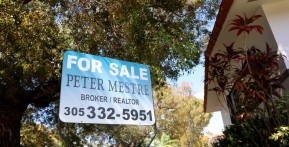The rate of homelessness in some major cities of the United States has been climbing at an alarming pace despite a steady economic growth, according to a survey by The United States Conference of Mayors. Low housing affordability was one of the major causes of homelessness.
The survey analyzed 25 major cities of 18 states in the U.S. to assess the effect of economic conditions on the population. The figures were concluded after examining information on emergency food assistance and homeless services provided between Sep, 2012 and August 2013.
The study found that homelessness increased in 64 percent of the cities, while only eight percent of them showed no changes. The total number of destitute families jumped by an average of four percent in cities like Chicago, Dallas, Washington and Los Angeles.
In another report by the National Association of Home Builders, it was revealed that housing affordability plummeted 4.8 percent on a quarter on quarter basis due to tight supply, high demand, soaring interest rates and high prices.
While one might have thought that homelessness was a disease plaguing the small towns or remote areas, the fact is, huge metropolitan cities are the ones suffering the most.
"This report makes clear how critical metropolitan areas are to our nation's economy and ongoing recovery. Cites and their metro economies account for over 90% of Gross Domestic Product (GDP); nearly 86% of the nation's population; and almost 86% of all jobs. So if our metro areas aren't doing well, the entire country suffers," Mayor Scott Smith, USCM President Mesa (AZ) said in a press statement.
Although unemployment rates have hit the lowest in five years and the housing market is gaining steady momentum, some government policies like the sequestration and issues like the debt ceiling battle are slowing down the economic recovery.
"There's no question that the nation's economy is on the mend, but there's also no question that the slow pace of recovery is making it difficult -- and, for many, impossible -- to respond to the growing needs of the hungry and the homeless," Tom Cochran, president of USCM added in the statement.
Experts suggest that the government channelize more funds in the metropolitan areas as they drive economic prosperity of the nation.
The report reflects the sad condition of the 'Great American Dream'. The white-picket fence around a three-bed home is a distant illusion when more than a quarter of the population craves for just a roof over its head.













